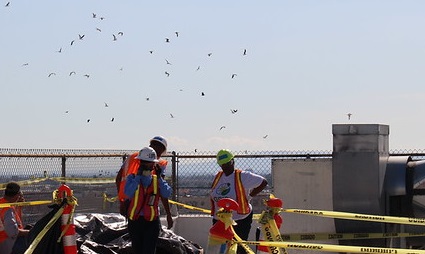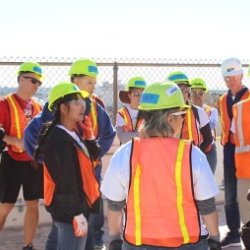When sick individuals with signs of a novel virus appeared on American shores this spring, sweeping business closures and widespread efforts to avoid contact with possibly infectious persons changed the way almost all of us lived. These shifts were accelerated dramatically by local decisions, like the shelter-in-place decision that went into effect in the City of Los Angeles.
New rules for essential workers changed the way we labor, too. Yet as economies halted, surprising developments in the integrity of our air, water, and other environmental factors were impossible to ignore.
California's abundant natural resources notwithstanding, it isn't a secret that our local emphasis on manufacturing, transportation, travel, and water consumption has resulted in environmental harm and, downstream, environmental injustice for harmed communities. Yet when human activity patterns changed, many changes in those environmental harms also emerged. More than half of the month of March was a clean air period, a phenomenon that doesn't have any recent precedent. Meanwhile, scientists were seeing the concentration levels of PM2.5 (air particulate matter) dropping to 50% of their previous levels in 2019, 2018, 2017, and 2016. Los Angeles was not the only megapolis impacted, as cities as far away as Asia and Europe saw air quality increase when residents were locked down.
 There were fewer cars on local roads in April and May and easier breathing than ever before in our lifetimes, and that will change as the United States comes to a new, safe normal after the peak of coronavirus in L.A. What we also believe needs permanent change locally, however, is our pattern of choice around engaging with the environment and ensuring that the planet's resources get to people safely – and equitably.
There were fewer cars on local roads in April and May and easier breathing than ever before in our lifetimes, and that will change as the United States comes to a new, safe normal after the peak of coronavirus in L.A. What we also believe needs permanent change locally, however, is our pattern of choice around engaging with the environment and ensuring that the planet's resources get to people safely – and equitably.
As policymakers and regional leaders guided us through a shutdown for the protection of the most vulnerable in Los Angeles, we also need their bravery in helping people transition justly away from fossil fuel burdens and the economic cruelty of extractive industries. We need clean, affordable solar energy in 2020 that's accessible to communities on the fencelines of pollution, too! In a social justice-driven transition, the allocation of investments in a healthier new age will go to those most harmed by pollution in the past, putting struggling people in black and brown communities at the front of the line. And we will need to be wary of the coronavirus, a complicated pandemic that threatens to do lasting harm in the places least-equipped to deal with it today.
It will take all our efforts to shift the direction of this country towards a future where liveability is secure on this planet, reallocating resources with a reimagined version of public safety. What better place to start that collaboration in full force, than Los Angeles? Let's hope that the tragedy that Earth's viral outbreak has inflected upon so many people can be a turning point for the health of our communities. In the possibility of this future, those of us at GRID Alternatives Greater Los Angeles find a measure of new calling.

